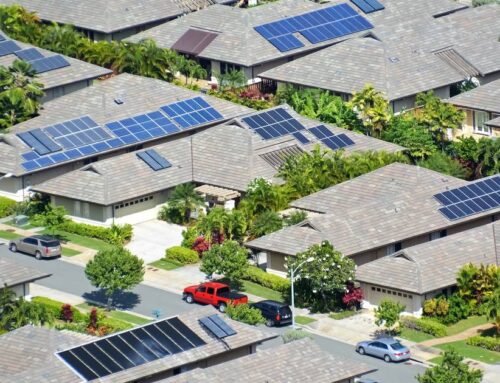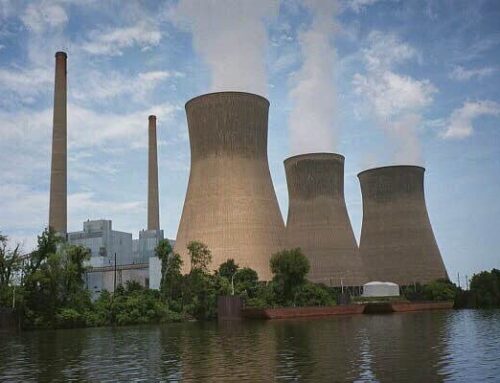FIFA, city of Arlington set to host first World Cup environmental event
June 11, 2025
A little over a year from now, floods of soccer fans from across the globe will enter North Texas to watch their teams compete in the FIFA World Cup.
While anticipation for the festivities has been boiling since Dallas — more accurately Arlington — was announced as a host city in 2022, the North Texas FIFA World Cup Organizing Committee is giving fans a chance to be part of the preparations.
Hosted by numerous authorities across North Texas including the city of Arlington, Trinity River Authority and FIFA, the first Lake Arlington Cleanup event will take place June 13. The event is meant to rally the community to help reach the sustainability goals set by the committee and FIFA.
“It’s all about bringing the community together,” said Meghna Tare, the chief sustainability officer at the University of Texas at Arlington, who holds the same title on the committee. “We want lots of volunteers to come and be part of this. We are hoping to have a good turnout, good engagement and good support to adapt toward our sustainability program to kick-start it.”
The cleanup is the first sustainability event created by the committee and is set to take place in two areas along the lake a year before the first game is hosted at AT&T Stadium.
Registration to volunteer for the event is closed.
FIFA has seven sustainability objectives as part of its environmental strategy, all of which Tare said this event helps address:
- Foster sustainable infrastructure and operations
- Mitigate the World Cup’s climate impact
- Reduce local air pollution at tournament sites
- Reduce waste and implement circular resource management
- Protect and promote biodiversity
- Raise awareness of key environmental issues
“It supports not just water, but also litter abatement,” Tare said. “It is reducing the waste that is in our waterway but also supports biodiversity because you are having a clean waterway. Everything we do broadly touches on and supports those seven objectives.”

Since the 2014 World Cup in Brazil, FIFA outlined long-term sustainability goals every four years for each country hosting a game.
However, this World Cup will be the first that the hosts were required to include a plan for sustainability and human rights into their overall proposal submitted to the FIFA Council.
The U.S., Canada and Mexico, which make up the United Bid, created a sustainability plan titled “Sustainability+.” Each host city within the three countries was told to create its own environmental plan to apply before, during and after the World Cup.
World Cup environmental concerns
The last World Cup, hosted in Qatar, was marred by environmental issues.
Ahead of the 2022 event, FIFA claimed that it would be the first-ever carbon-neutral World Cup by offsetting the carbon footprint with environmental initiatives and carbon credits. The claim was disputed by experts and, eventually, FIFA was told that it was no longer allowed to advertise the World Cup using the description.
Ahead of the upcoming World Cup, some have already brought forward concerns about the environmental toll of the event.
Experts raised flags about potential issues with record-level heat and the expansion of the tournament from 32 participating teams to 48 with 16 host cities across North America.
Brendan Lavy, an assistant professor at Texas Christian University in the department of environmental and sustainability sciences, echoed concerns about the heat and increased travel’s impact on ozone, particularly in Arlington.
He referenced the fact that the DFW area, including Tarrant County, has not met the EPA’s ozone standards as a unique issue for the area.
Ozone status
For over 20 years, the Fort Worth-Dallas area has not reached the EPA’s ozone standards. In 2024, Gov. Greg Abbott requested that the EPA reclassify the area alongside others in Texas from moderate to serious nonattainment status.
By reclassifying, the region’s deadline to reach the EPA’s status was shifted to 2027. If the area fails to reach these standards by 2027, it may face an annual fine of up to $45 million under the Clean Air Act.
“Vehicle emissions contribute to ozone formation, and when you add in high temperatures and intense sunlight, it worsens the problem,” Lavy said. “This is already a major challenge for our region, even without the added pressures of a global event.”
In April 2024, Michael Morris, the director of transportation at the North Central Texas Council of Governments, unveiled the public transportation plan to create a “bus bridge” connecting Arlington with surrounding cities. The plan calls for the use of charter buses inside Arlington to fill the hole in the city’s nonexistent public transportation.
Lavy also questioned the committee’s waste plans for the World Cup. The initiative would be good but he was unsure if it would be a long-term commitment or just something done only for the event then abandoned following the World Cup final, he said.
Tare and the committee’s hope is that the sustainability efforts can extend beyond just the World Cup and have a lasting impact, she said.
“There is a legacy piece to this conversation like, ‘What are some of the programs or initiatives that we can do that can live after the World Cup? After everyone goes back to their lives,’” Tare said.
Chris Moss is a reporting fellow for the Arlington Report. Contact him at chris.moss@fortworthreport.org.
At the Fort Worth Report, news decisions are made independently of our board members and financial supporters. Read more about our editorial independence policy here.
Search
RECENT PRESS RELEASES
Related Post




